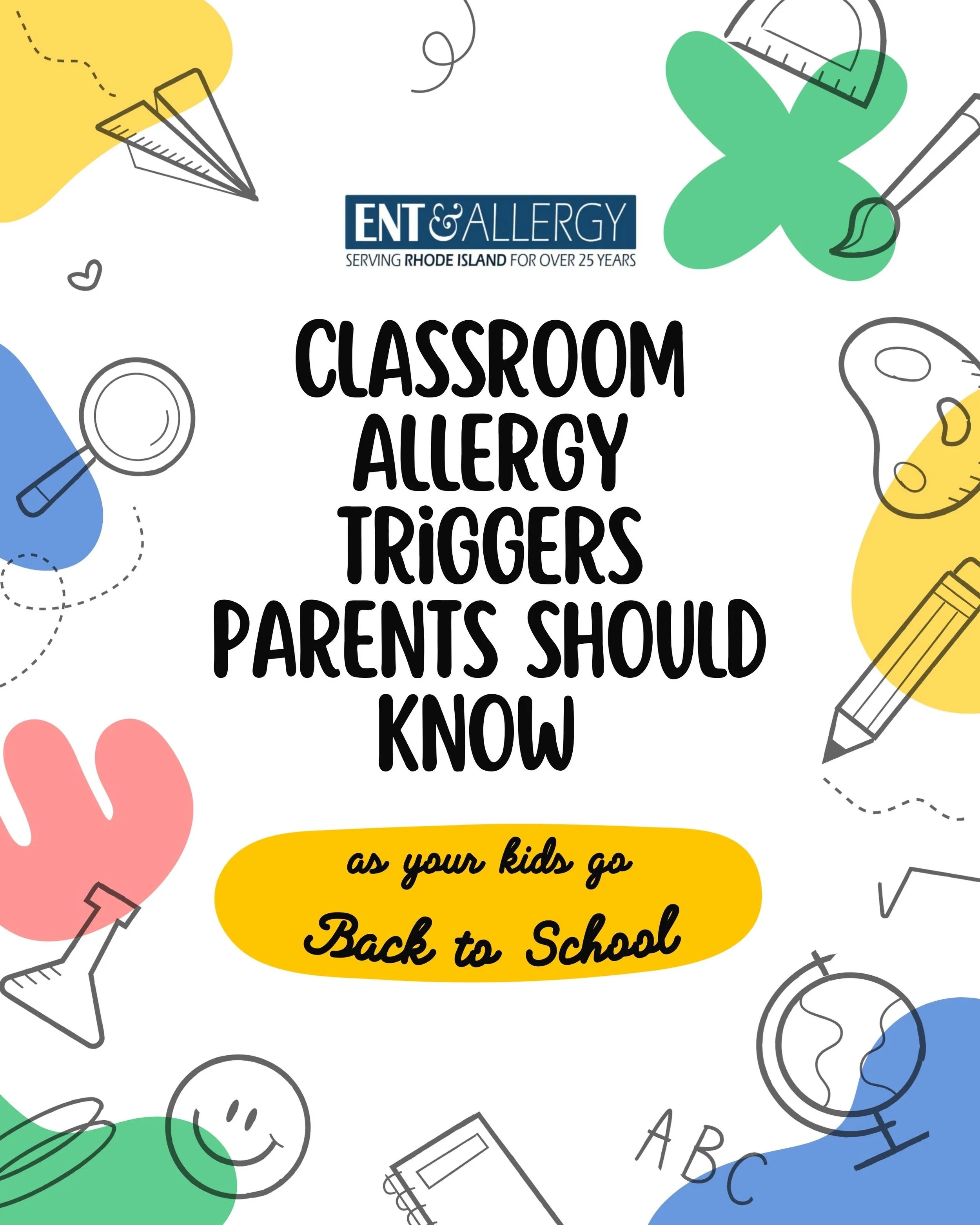Classroom Allergy Triggers: What Parents Should Know as Kids Go Back to School
Back-to-school season is an exciting time filled with new teachers, friends, and opportunities for growth. But for children with allergies, the classroom can also present hidden challenges. Many parents expect outdoor allergens like pollen to cause flare-ups, but what’s inside the classroom can be just as problematic.
Here are some of the most common classroom allergy triggers to watch for, and what you can do to help your child manage them.
1. Dust and Dust Mites
Classrooms are full of books, shelves, bulletin boards, and carpets — all of which are perfect hiding spots for dust and dust mites. Even with regular cleaning, it’s tough to completely eliminate these microscopic allergens.
Possible symptoms:
Frequent sneezing or coughing in class
Congestion that clears up at home
Watery, itchy eyes during the school day
What you can do:
Talk with your child’s teacher about minimizing dust buildup, such as wiping down desks and avoiding heavy drapes.
Request that your child sit away from bookcases, carpets, or air vents where dust collects.
2. Chalk Dust and Strong Markers
While chalkboards are less common than they used to be, many classrooms still use chalk or dry-erase markers. Chalk dust can irritate sensitive noses and throats, while strong-smelling markers may trigger allergy or asthma symptoms.
Possible symptoms:
Persistent throat clearing
Coughing or shortness of breath
Headaches triggered by strong marker odors
What you can do:
Ask if your child can sit farther away from the board.
Suggest that low-odor markers be used whenever possible.
3. Classroom Pets
Hamsters, rabbits, guinea pigs, and even fish tanks are common in classrooms and can enrich a child’s learning experience. However, pet dander, fur, and bedding materials can be powerful allergens.
Possible symptoms:
Sneezing and itchy nose after pet interaction
Rash or hives on exposed skin
Increased asthma symptoms when near the animal’s cage
What you can do:
If your child has known pet allergies, ask about classroom animals before the school year begins.
Provide your child’s teacher with instructions for managing exposure.
In some cases, a note from your child’s doctor may help request accommodations.
When to Seek Help
If your child comes home with frequent allergy symptoms — watery eyes, a runny nose, congestion, or an ongoing cough — it may be more than just back-to-school sniffles. Sometimes what looks like a string of colds is actually allergy-related.
An evaluation by an ENT & allergy specialist can help identify your child’s triggers and create a personalized treatment plan. Options may include allergy testing, medications, or even small classroom adjustments that make a big difference in your child’s day.
The Bottom Line
School should be a place where kids can focus on learning, not managing allergy symptoms. By recognizing common classroom triggers like dust, chalk, and pets — and seeking support when needed — you can help your child breathe easier and enjoy a healthier, more productive school year.
✨ We’re here to help. If your child struggles with allergy symptoms during the school day, schedule an appointment with our team. Together, we’ll create a plan that helps them stay focused, comfortable, and ready to learn.

